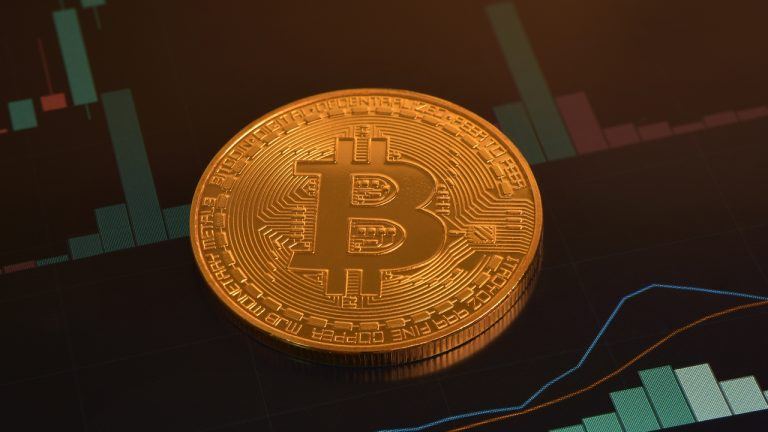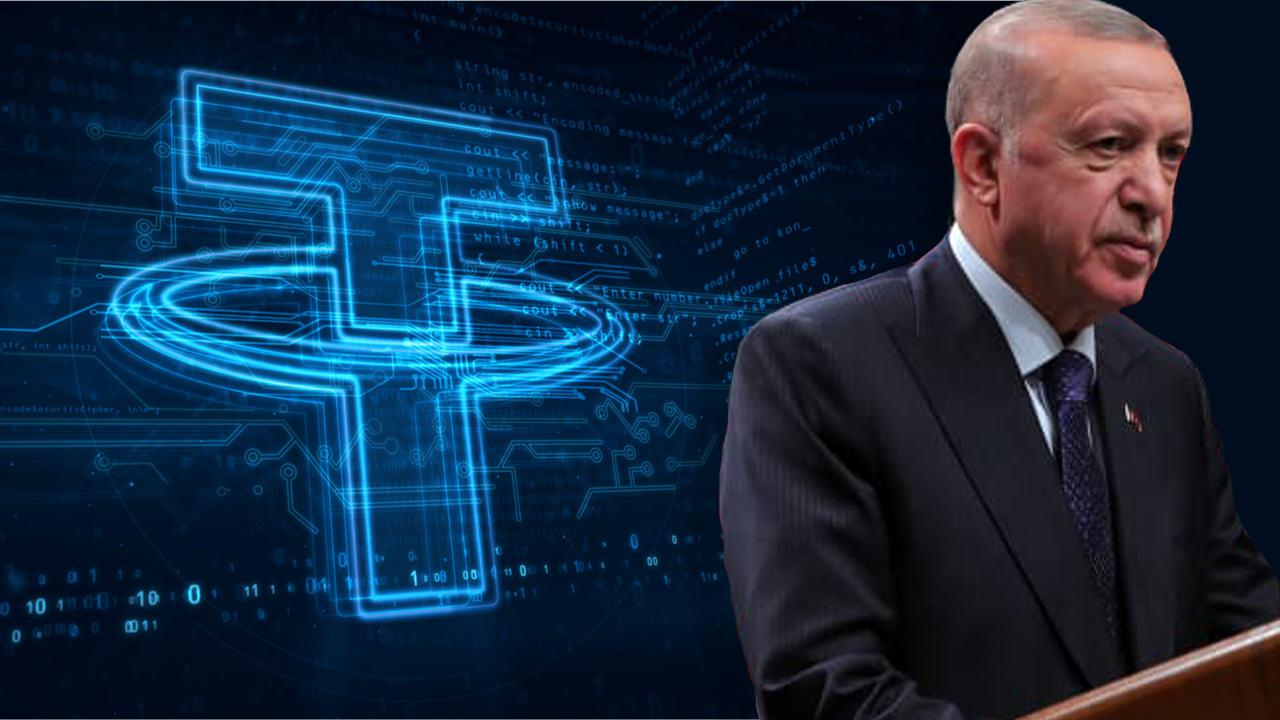 Despite recent turbulence in the crypto market, bitcoin’s price continues to carry a premium in South Korea. As of 4 p.m. EDT, bitcoin is trading at $59,002 per unit, but in South Korea, the exchange rate hits $59,900, reflecting a 1.52% premium. Despite First Negative Dip Since Oct. 2023, South Korea’s Bitcoin Premium Continues Interestingly, […]
Despite recent turbulence in the crypto market, bitcoin’s price continues to carry a premium in South Korea. As of 4 p.m. EDT, bitcoin is trading at $59,002 per unit, but in South Korea, the exchange rate hits $59,900, reflecting a 1.52% premium. Despite First Negative Dip Since Oct. 2023, South Korea’s Bitcoin Premium Continues Interestingly, […] The largest cryptocurrency exchange by trading volume, Binance, is set to introduce toncoin (TON) trading pairs on Aug. 8, leading to a more than 10% increase in TON’s value against the U.S. dollar. Currently, TON is trading within a range of $5.36 to $6.41 over the past day, making it the eighth largest crypto asset […]
The largest cryptocurrency exchange by trading volume, Binance, is set to introduce toncoin (TON) trading pairs on Aug. 8, leading to a more than 10% increase in TON’s value against the U.S. dollar. Currently, TON is trading within a range of $5.36 to $6.41 over the past day, making it the eighth largest crypto asset […] The price of bitcoin (BTC) increased by 1.9% over the past day, peaking at an intraday high of $69,404 around 9 a.m. EDT on Saturday. Over the last week, BTC has climbed by 3.1% and has risen 16.8% over the past two weeks. Bitcoin’s Upward Momentum: Key Stats and Market Impact Bitcoin is gaining momentum […]
The price of bitcoin (BTC) increased by 1.9% over the past day, peaking at an intraday high of $69,404 around 9 a.m. EDT on Saturday. Over the last week, BTC has climbed by 3.1% and has risen 16.8% over the past two weeks. Bitcoin’s Upward Momentum: Key Stats and Market Impact Bitcoin is gaining momentum […] The price of bitcoin climbed 2.7% over the past 24 hours, reaching an intraday peak of $60,423 per token. For over a week, BTC remained below the $60,000 mark. However, on Sunday morning at 4 a.m. EDT, it surpassed this threshold for the first time in 11 days. BTC Rises to $60,423, Marking 2.7% Increase […]
The price of bitcoin climbed 2.7% over the past 24 hours, reaching an intraday peak of $60,423 per token. For over a week, BTC remained below the $60,000 mark. However, on Sunday morning at 4 a.m. EDT, it surpassed this threshold for the first time in 11 days. BTC Rises to $60,423, Marking 2.7% Increase […]

Concerns were raised after a Bloomberg article reported Kraken was “actively reviewing” which tokens it could continue to list under the European Union’s upcoming MiCA framework.
Cryptocurrency exchange Kraken has “no plans” to delist Tether (USDT) in Europe at the moment despite a recent report claiming the firm was “actively reviewing” the decision to remain legally compliant.
“[Kraken] continues to list USDT in Europe and we have no plans to delist at this time,” stated Mark Greenberg, Kraken’s global head of asset growth and management in a May 18 X post.
The firm will continue to follow all legal requirements — even those that it disagrees with — Greenberg iterated. “But the rules are not finalized yet and we continue to do everything we can to continue to offer all relevant stablecoins to our European customers.”

Ether has broken the $1,900 resistance level for the first time in months and is currently sitting above $1,911.
Ether (ETH) has breached $1,900 for the first time in over seven months, a week before staking withdrawals are enabled in the next major update for the second-largest cryptocurrency by market capitalization.
CoinMarketCap data shows the last time Ether was over $1,900 was on Aug. 16, 2022, amid a broader crypto sell-off at a time when the United States Federal Reserve was hiking the Federal Funds rate at a record pace to combat inflation.
The Ethereum Shanghai hard fork, set to occur on April 12, will implement EIP-4895 — allowing validators and stakers to withdraw staked ETH from the beacon chain — in addition to other EIPs which aim to help increase transaction speeds while reducing transaction costs.
Alright, let's talk about the Ethereum Shanghai Upgrade! It's a hard fork scheduled to occur in March 2023. Stakers and validators will be able to withdraw staked ETH from the Beacon Chain. Approximately 16 million staked ETH will be available for withdrawal.
— Branimir Stojanović (@branelost) April 4, 2023
The recent price increase could be driven by expectations that the Fed may ease up on its quantitative tightening efforts as rate increases cause cracks in the global banking industry, or by increased demand for Ether given that staking is slated to be more flexible.
While Bitcoin (BTC) has also recorded gains in recent days, ETH/BTC — a trading pair comparing the price of ETH to BTC — has increased by nearly 3% in the last week according to TradingView, suggesting both factors may be contributing to Ether’s price jump.
$ETH / $BTC
— K A L E O (@CryptoKaleo) April 5, 2023
Solid bounce for ETH relative to BTC the past several days
tbh though, still just expect this as nothing more than a swing play opportunity and profits should rotate back into BTC before $30K breaks and the ratio trend reverses bearish again pic.twitter.com/MOe1GlibaX
While Shanghai refers to the fork on the execution layer client side, Capella is the upgrade name on the consensus layer client side and is set to be executed shortly after Shanghai on April 12.
The execution layer is where all the smart contracts and protocol rules are, while the consensus layer ensures that all network validators follow these rules.
Related: 3 reasons why Ethereum price can reach $3K in Q2
It is worth noting that the price of ETH dropped sharply following the execution of The Merge on Sept. 15, 2022, where it lost just under a quarter of its value in one week according to CoinMarketCap.

Despite some analysts and traders suggesting the unlocking of staked Ether will create sell pressure, what will occur following the Shanghai and Capella updates is currently speculation.
Hodler’s Digest: FTX EU opens withdrawal, Elon Musk calls for AI halt, and Binance news
 On Monday, April 3, the decentralized exchange (dex) platform Pancakeswap launched version 3 of its protocol (v3) on the Binance Coin (bnb) and Ethereum blockchains. The new application aims to improve the performance of the dex protocol and reduce fees by implementing four levels of trading fees. New Features and Improved Capital Efficiency Offered in […]
On Monday, April 3, the decentralized exchange (dex) platform Pancakeswap launched version 3 of its protocol (v3) on the Binance Coin (bnb) and Ethereum blockchains. The new application aims to improve the performance of the dex protocol and reduce fees by implementing four levels of trading fees. New Features and Improved Capital Efficiency Offered in […] Bitcoin reached a high of $28,422 per unit on Sunday at around 3 p.m. Eastern Time as the leading cryptocurrency has continued to rise during the last week. Since last Sunday, bitcoin has increased in value by 37.9% against the U.S. dollar, and the cryptocurrency’s overall market capitalization has swelled to $546 billion. Global Cryptocurrency […]
Bitcoin reached a high of $28,422 per unit on Sunday at around 3 p.m. Eastern Time as the leading cryptocurrency has continued to rise during the last week. Since last Sunday, bitcoin has increased in value by 37.9% against the U.S. dollar, and the cryptocurrency’s overall market capitalization has swelled to $546 billion. Global Cryptocurrency […]
Multiple trading pairs of the Helium Foundation’s token will soon be removed from Binance, with the exchange saying it delists assets if it no longer meets “high standards.”
The chief operating officer for the Helium Foundation, Scott Sigel has claimed there is “no basis” for cryptocurrency exchange Binance to delist several trading pairs of its cryptocurrency — Helium Network Token (HNT).
Sigel’s comments come after an Oct. 6 notice by Binance saying the exchange is removing cross, isolated margin and spot trading pairs for HNT and Binance USD (BUSD), Tether (USDT) and Bitcoin (BTC).
Binance “strongly advised” users to close any positions in its listed pairs as user positions will be forcibly closed, and any pending orders canceled on Oct. 12 with only spot trading for the HNT/BUSD pair remaining.
Jessica Jung, a Binance spokesperson, said in a statement to Forbes that the exchange periodically reviews its listed cryptocurrencies to ensure they continue “to meet a high level of standard.”
If an asset doesn’t meet the standard or “there are changes in the industry” it will delist it “in order to protect our users,” she explained.
Sigel in response stated “there is no basis for Binance to delist several HNT pairs. There has been no change to the integrity of HNT and it continues to meet all of the standards the exchange sets.”
“There are dozens of other exchanges that continue to support HNT. We hope Binance reverses course and re-lists the other HNT trading pairs soon,” he added.
Helium was founded in 2013 as an Internet of Things (IoT) focused blockchain and is building a decentralized peer-to-peer wireless telecommunications network, on Sept. 22 it said it would migrate its blockchain to Solana (SOL) which it said was for more ecosystem support among other reasons.
Related: Security and interoperability, the challenges ahead of Web3 mass adoption
Questions as to why Binance is partially delisting HNT has sent traders speculating, with some claiming it was in response to Binance’s mix-up of Helium ecosystem tokens in September where an accounting bug saw the exchange allegedly lose around $19 million worth of crypto.
It’s reported that Binance confused HNT with a much lower-priced token used by Helium to pay hosts of its 5G hotspot network called MOBILE and paid out around 4.8 million HNT causing a massive sell-off of the token, temporarily dropping its price.
Criticism has also been leveled at Helium for its revenue numbers despite significant funding rounds. In July, data suggesting the project makes only $6,500 per month from its data usage revenue was revealed, despite the company raising hundreds of millions from the likes of Andreessen Horowitz (a16z), FTX Ventures and Tiger Global.
In August, Helium was caught listing partners on its website, namely e-bike business Lime and software company SalesForce, which both denied either working with the firm or having an active partnership. Helium removed the mentions to both organizations on its website soon after.
 The Republic of Turkey’s economy and the country’s native fiat currency the Turkish lira continue to experience turmoil as inflation has risen to 36%. Since this time last year, the lira has lost 44% of its value against the U.S. dollar. Meanwhile, the use of stablecoins in Turkey has skyrocketed and today, 28.96% of all […]
The Republic of Turkey’s economy and the country’s native fiat currency the Turkish lira continue to experience turmoil as inflation has risen to 36%. Since this time last year, the lira has lost 44% of its value against the U.S. dollar. Meanwhile, the use of stablecoins in Turkey has skyrocketed and today, 28.96% of all […]